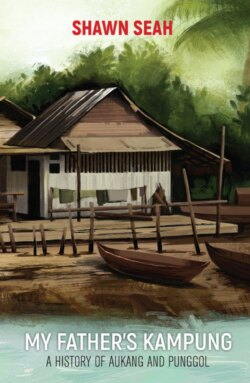Читать книгу My Father's Kampung - Shawn Seah - Страница 17
Endnotes
Оглавление1 Augustine Low, “Kangkar, once noted for fresh fish and Teochews”, in The Straits Times, 30 September 1986, p. 16.
2 Chua Seng Chew, Report on the Census of Population 1957, (Singapore: Lim Bian Han, Government Printer, Singapore, 1964), p. 146.
3 Proportions paint a more accurate picture than absolute sizes. This is because while there were more than 140,000 Teochews in the City of Singapore, there were more than 700,000 Chinese of many dialect groups residing in the area. In contrast, only about 165,000 Chinese resided in Serangoon.
4 Report on the Census of the Straits Settlements, cited in Tan Gia Lim, An Introduction to the Culture and History of the Teochews in Singapore, (Singapore: World Scientific, 2018), p. 50.
5 Bryan Goh, “The Catholic-Teochew Rhythm: Communal Identity in Hougang, 1945–1981”, Sojourn: Journal of Social Issues in Southeast Asia, Vol. 33, No. 1, March 2018, p. 228.
6 Robert Yeo, Routes: A Singaporean Memoir 1940–75 (Singapore: Ethos Books, 2014), p. 40.
7 Ibid., pp. 39–40.
8 Leong Ching, “Chua Kee Teang: Possibilities in Thorny Problems”, in The Story of Singapore Teochews (Singapore: Teochew Poit Ip Huay Kuan, 2018), pp. 28–30.
9 Tan Kog Enn, “Ng Hoy Keng: Driving Ambition”, in The Story of Singapore Teochews (Singapore: Teochew Poit Ip Huay Kuan, 2018), pp. 80–83.
10 Choo Woon Hock, “Koh Yang Kee: From Truck Driver to Logistics Leader”, ibid., pp. 122–123.
